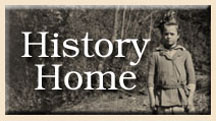

The Impact of Arrowcraft on Gatlinburg: Page 2
Thus the social importance of Arrowcraft: participation in the program quite literally required Gatlinburg women to travel regularly; to interact with their peers; and to indulge their artistic tendencies. In order to do business with Arrowcraft, artisans (the vast majority of whom were female weavers) were expected to visit the Settlement School campus at least once every two weeks to pick up supplies and hand in finished work. This brought them into contact with friends and neighbors, and allowed them ample opportunity for social interaction. Additionally, the Arrowcraft staff encouraged weavers and other artisans to experiment with new patterns and techniques, and for the more skilled among them, to develop patterns and techniques of their own. On one occasion in 1949, Weaving Instructor Tina McMorran arranged a display of Arrowcraft work on the Settlement School campus. Afterward, Settlement School Director Ruth Dyer commented that “It is surprising that sometimes these weavers, living far away, see only the pattern on which they themselves weave. . . . The weavers truly appreciated this chance to see others work.”
An offshoot of Arrowcraft, the Gatlinburg Weavers’ Guild, served to elevate the status of Gatlinburg women further by providing them with additional social and recreational opportunities (many of which extended beyond the realm of handicrafts production). Led by Weaving Instructor Winogene Redding, guild members staged teas, parties, picnics, and educational gatherings, and on more than one occasion, wrote and staged plays at the Settlement School. The guild also encouraged women to engage in home improvement and beautification projects, and to organize roadside vegetable markets. In order to ensure that the Weavers’ Guild fulfilled its potential as a source of good works, Redding insisted that membership be open to all Gatlinburg women, regardless of whether they participated in the Arrowcraft Weaving Program. Given the open invitation, guild meetings were typically crowded and boisterous; but this condition was viewed by the Settlement School staff as acceptable, for “a good time was always had by all.”
Over the years, with the coming of good roads and the Gatlinburg tourist industry, Arrowcraft saw its relevance gradually diminish. Hotel and restaurant jobs paid more than weaving, carving, and basketry, and the program witnessed a partial (although certainly not complete) loss of its workforce. Still, tourism was seasonal, and during the winter months, families often encountered considerable difficulty meeting their financial obligations. It was not uncommon, then, to find Gatlinburg families earning a significant portion of their income from weaving and other Arrowcraft handcrafts well into the 1970s and 1980s.
In Recent years, following Pi Beta Phi’s decision to turn over its handcrafting interests to the Southern Highland Craft Guild, Arrowcraft has ceased serving Gatlinburg artisans exclusively. It has instead been given over to the task of marketing items on behalf of all guild members, regardless of where they live. But the shop’s legacy lives on, for it is easily one of the oldest, and certainly one of the most important, of Gatlinburg’s industries.
| <<< Page 1 | Page
2 |
 |
|